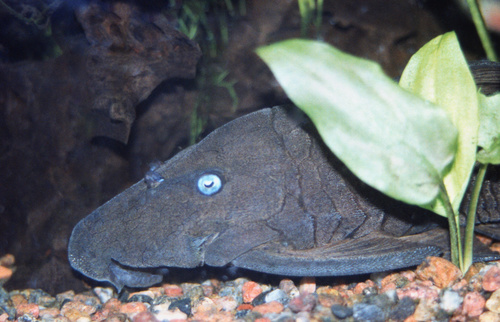
Blue Eye Pleco
The Atlantic bluefin tuna (Thunnus thynnus) is a highly migratory, large pelagic fish renowned for its size, speed, and commercial value. It plays a critical role in the marine ecosystem and is a prized catch in fisheries worldwide.
10 20 years
Lifespan
30 - 40 cm
Length
Least Concern
Conservation Status
5 km/h
Swimming speed
Detritivorous
Diet
Local Migration
Migration
Appearance Overview
The Atlantic bluefin tuna is a large, torpedo-shaped fish with a metallic blue-black back and a silvery-white belly.
Coloration
Dark metallic blue on top, silvery-white underside
Fins
Two dorsal fins, the first is yellow or bluish, the second is reddish-brown
Finlets
Small, yellow finlets running from the second dorsal and anal fins to the tail
Body shape
Torpedo-shaped, streamlined for speed
Length
Up to 13 feet (4 meters)
Weight
Up to 2,000 lbs (907 kg)
Diet
Carnivorous, feeding on fish, squid, crustaceans, and eels
Feeding Behavior
Aggressive predators, they use their speed and agility to chase down prey, often feeding in coordinated schools
Social Behavior
Highly migratory, forming large schools, especially during spawning
Commercial Relevance
Extremely high value, especially in sushi and sashimi markets, where it is considered a delicacy
Conservation measures
International fishing quotas, stock management programs, and efforts to reduce bycatch
Status
Endangered (Varies by specific stock, some are recovering)
Threats
Overfishing, illegal fishing, habitat degradation, and climate change
Habitat Distribution
Depth Range
0-1,000 meters (0-3,280 feet), though they are often found in surface waters
Geographic Range
Atlantic Ocean, Mediterranean Sea, Gulf of Mexico, and the coast of Norway
Preferred Environment
Temperate and subtropical waters, open ocean, and coastal areas
Reproduction and Life Cycle
Breeding Habits
Spawns in warm waters, primarily in the Mediterranean Sea and the Gulf of Mexico, with specific spawning grounds
Development Stages
Eggs hatch into larvae, which develop rapidly in plankton-rich waters, growing into juveniles and eventually adults
Fecundity
Females can produce up to 30 million eggs per season, releasing them in batches
Maturity Age
Reaches sexual maturity between 4-8 years, depending on the population
Faqs about Blue Eye Pleco
How fast can Atlantic bluefin tuna swim?
Atlantic bluefin tuna are among the fastest fish in the ocean, capable of reaching speeds up to 43 mph (70 km/h).
How long do they live?
They can live up to 40 years, though this is rare due to fishing pressure.
Are Atlantic bluefin tuna warm-blooded?
Yes, they are warm-blooded, which helps them maintain high body temperatures and swim at high speeds in cold waters.
Where can I find Atlantic bluefin tuna?
They are primarily found in the Atlantic Ocean, ranging from the Mediterranean Sea to the Gulf of Mexico and the coast of Norway.
Why are they endangered?
Overfishing has severely depleted their populations, making them endangered.
Where do they spawn?
They typically spawn in the warm waters of the Mediterranean Sea and the Gulf of Mexico.
What do they eat?
Their diet consists mainly of fish, squid, crustaceans, and eels.
How many eggs do they lay?
Females can release millions of eggs per spawning season.
When do they reach maturity?
They reach sexual maturity at around 4-8 years of age.
What is being done to protect them?
International regulations and fishing quotas are in place to help manage and conserve their populations.
Copyright @ Nature Style Limited. All Rights Reserved.
 English
English